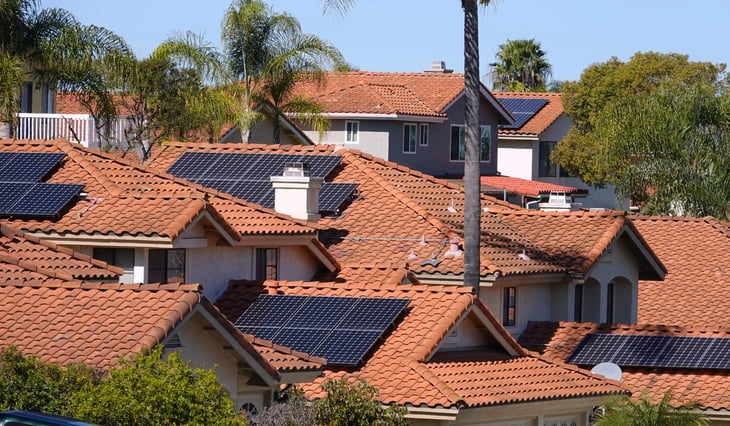
Editor's Note: This story originally appeared on LawnStarter.
In 2021, solar power supplied about 2.8% of America’s total electricity consumption.
With so many advantages of solar energy, it’s no surprise that more and more homeowners are going solar.
Solar panels provide homeowners with a clean source of energy that protects the planet by reducing carbon emissions. Not only that, they also save homeowners on their electric bills by using the sun’s energy to power their homes.
You may be thinking about investing in solar panels, but solar installation is a costly investment and you want to make sure that the expense is worth the benefits.
What Are Solar Panels?
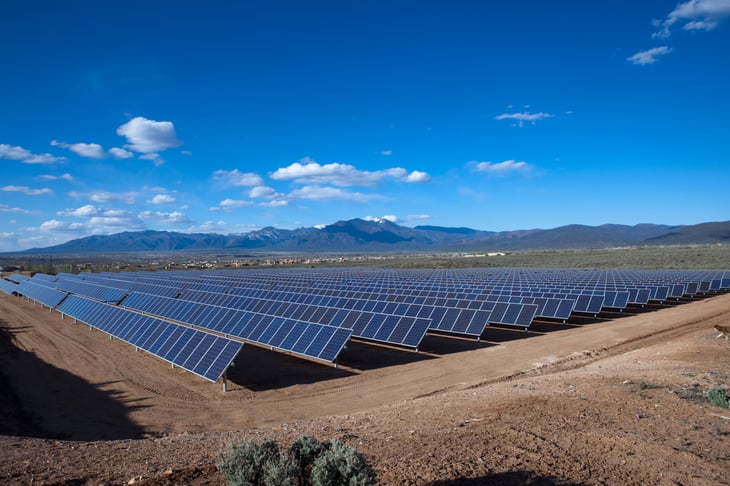
Solar photovoltaic panels are pieces of technological equipment that use solar cells to collect energy from sunlight. The solar cells, arranged in a grid pattern, convert the absorbed sunlight into electrical energy that can be used to power your home.
Homes with solar panels can stay connected to the electricity grid or be off the grid.
If homeowners want energy independence, it is possible for homes to be disconnected from the grid, but homeowners must buy a solar battery for energy storage. All excess energy will be stored in the solar battery for later use.
Types of Solar Panels
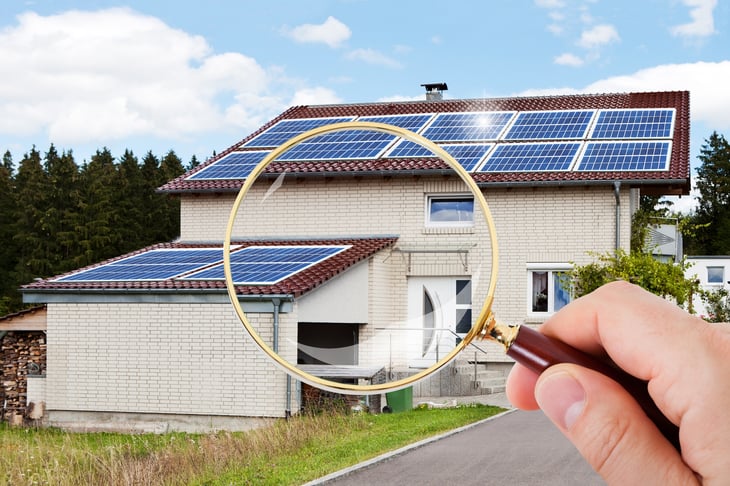
There are three main types of solar panels.
- Monocrystalline: Constructed from silicon crystals, monocrystalline panels are the most expensive and longest-lasting. They are the most efficient type of solar panel, as they convert about 24% of sunlight into energy.
- Polycrystalline: Polycrystalline panels are an appealing choice for those looking for a cheaper option. However, while they are lower in cost, they are also lower in productivity, with an energy efficiency rate of 20%. They are durable but have a shorter lifespan than monocrystalline panels.
- Thin-Film: Valued for their mobility and light-weight material, thin-film solar panels have a shorter lifespan. They are cheaper than monocrystalline panels but also have a lower efficiency rate of 19%.
How Do Solar Panels Work?
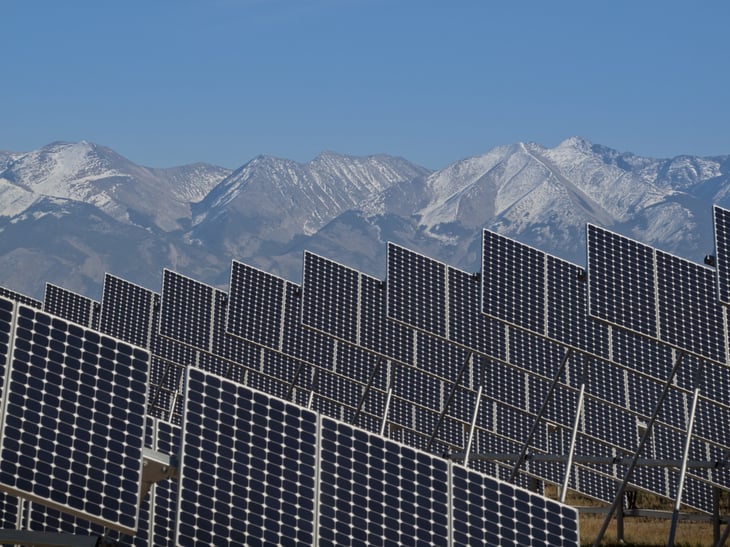
The process of converting the absorbed sunlight into electricity occurs in a few steps:
- Sunlight is absorbed by solar cells.
- The absorbed sunlight is converted into direct current (DC) power.
- Next the DC power is passed through an inverter and converted into alternating current (AC) power.
- Once the energy has been successfully transformed into AC power, it goes into outlets of your home and powers your home. Inverters can convert sunlight into either electric energy or thermal energy for household usage.
Here are the top advantages of solar panels.
1. Lower Electric Bills
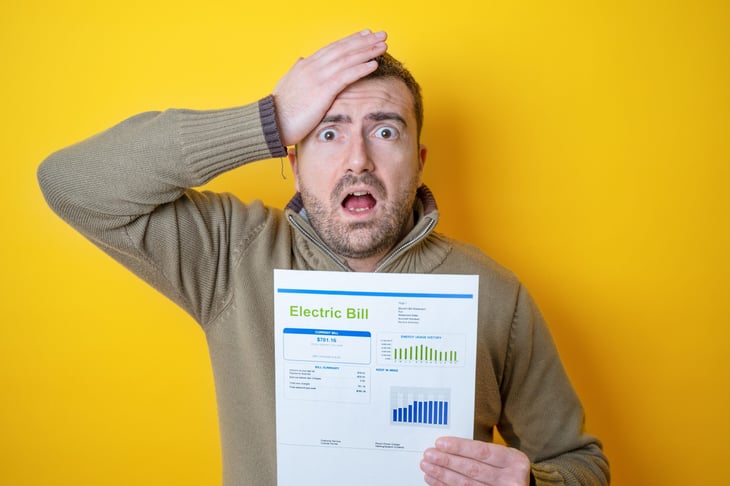
Saving on power bills is solar energy’s primary benefit that makes homeowners consider investing in solar energy systems.
Even though there is a big upfront expense for solar panels, eventually solar panels accrue enough savings on energy bills to pay themselves off. The amount that homeowners will save with solar panels depends on local electricity rates.
The higher your utility rates, the more money your solar panels will save you on energy usage. Solar panels can save homeowners up to $1,500 on electric bills each year.
Energy production levels also determine how much you save. Depending on the climate and the structure of the roof, solar panels won’t always produce energy at the same rate.
Solar panels produce the most energy when they are set in direct sunlight without interference from shade or cloud cover.
2. Form of Renewable Energy
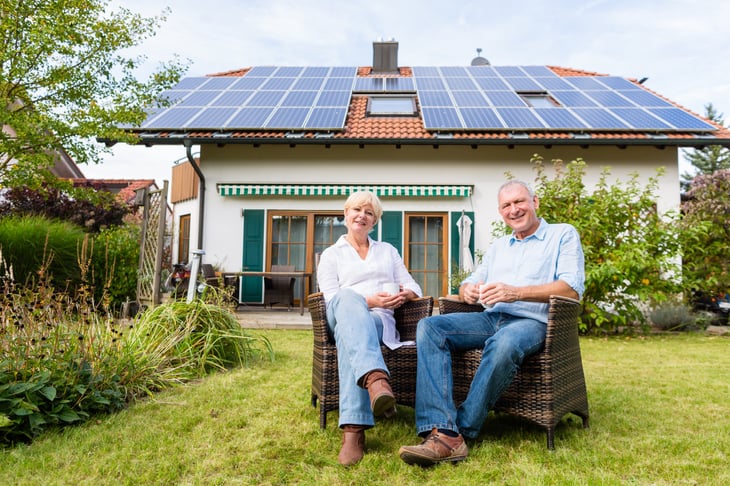
By converting the natural light of the sun into clean energy, solar panels are a pollution-free way to create green, clean energy.
The world’s limited supply of fossil fuels is predicted to run out by 2052, which makes solar panels a valuable source of renewable energy. Sunlight isn’t just a natural energy resource, it’s also a sustainable resource.
Every time electricity created from solar panels is used, it saves on using alternative energy sources such as natural gas and fossil fuels, which are limited and have negative environmental impact.
Solar panels don’t generate pollution, which allows homeowners to reduce their carbon footprint by using natural energy. If you want to go green and help preserve the earth, solar panel systems are an eco-friendly way to generate renewable energy.
3. Long Lifespan
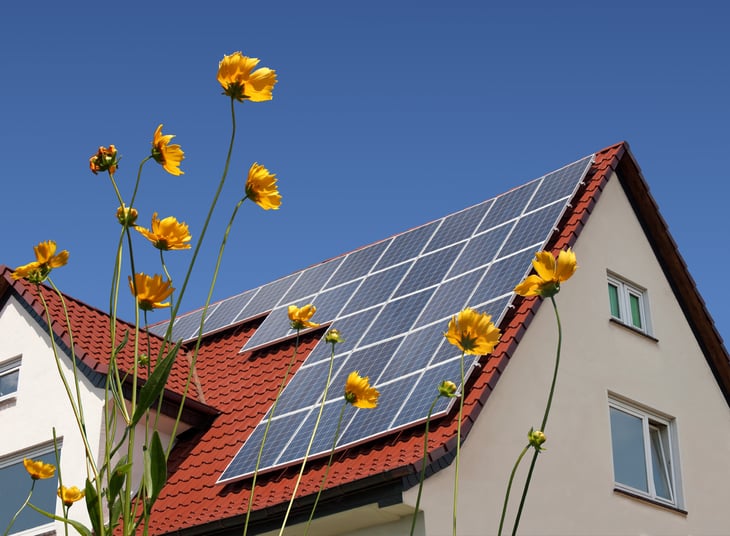
Usually, solar panels have a lifespan of about 25 to 30 years, so they last longer than some conventional roofing systems. Depending on the type, some solar panels can last up to 35 to 40 years.
4. Low Maintenance
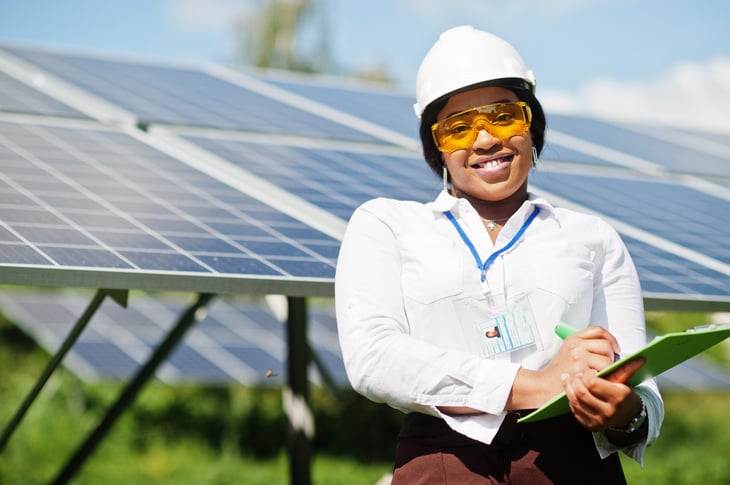
Solar panels don’t take much effort to maintain, usually only needing maintenance about two to four times a year. The inverter will need to be replaced about every 15 years.
Typically, solar PV systems are hardy and durable in the face of storms, hail, and gusty winds. Since they are built to withstand rough weather conditions, they only need occasional repairs.
Solar panels need to be cleaned periodically whenever dust, dirt, bird droppings, or leaves are covering the panels, which decreases the system’s performance. Rain rinses away some dirt and debris, but it won’t get everything.
To clean your solar array, simply hose down the panels to rinse off minor buildup. If your solar panels need a more intense cleaning, use a soft brush or squeegee to scrub off debris with warm, soapy water.
5. Option for Upgrades

If you ever want to expand your solar array, you can add more solar panels to your roof at any time.
If wear and tear has decreased the performance of your solar panels over time or if your home consumes more power than it used to, you may need to expand your solar array to fulfill your home’s energy needs.
Whether you want to add more panels or solar batteries for extra energy storage, it is possible to upgrade your solar array. Just make sure that any new additions to your solar array are compatible with the old panels, inverters, and solar batteries.
6. Cool Roof
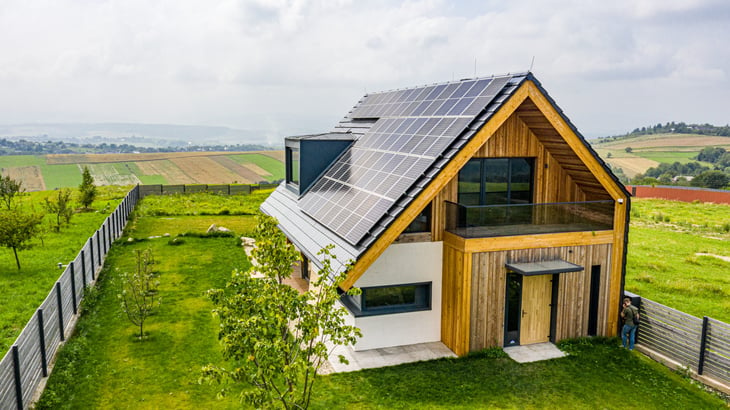
Solar panels cover your roof, providing shade that cools down your roof and attic. The rooftop solar system absorbs the heat from sunlight and transforms it into energy.
Because the solar panels absorb the heat, your roof doesn’t have to. Ultimately, a cooler roof helps lower your home temperature, as well, providing another way that solar panels save on power bills.
7. Adaptable
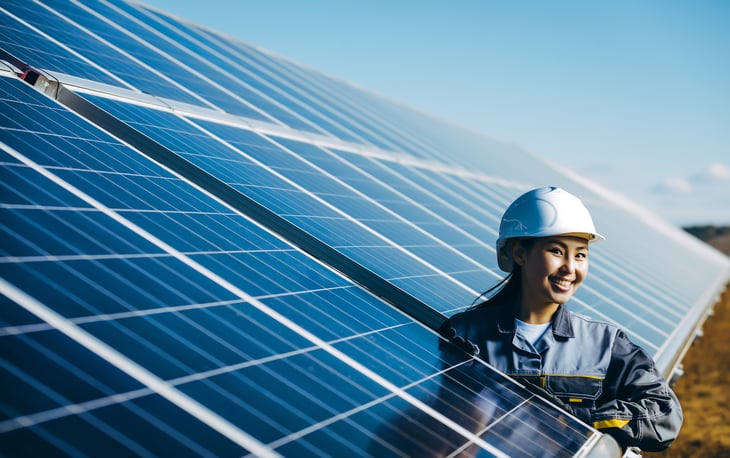
Thanks to technological advancements, high-quality solar panels can produce energy even on cloudy days. Productivity of a solar panel is less efficient on overcast days than on sunny days, but they can still convert sunlight to electricity even in indirect sunlight.
Although some roofing materials work better than others when it comes to holding solar panels, solar panels can work on any kind of roof.
The best roofing materials for installing solar panels include:
- Asphalt shingles
- Clay
- Concrete
- Metal
- Slate
- Tar and gravel
Solar panels also stand up in cold weather. They produce just as much energy in winter as they do in the summer. Sometimes a solar array can even produce energy more efficiently in cold weather than warm weather.
8. Increased Home Value

Like any home improvement, solar PV systems are an investment that increases the value of your home. Solar panels can increase the value of your house by up to $15,000.
However, leased solar panels won’t add to the value of your house, since in a lease agreement you do not own the panels. Leased panels may make it difficult to sell your home, as potential buyers may find the leased solar panels a turn-off.
9. Financial Incentives

There are a lot of incentives available to homeowners who install solar technology. Taking advantage of these incentives helps homeowners greatly reduce the cost of purchasing a solar system.
These incentives include the following:
Federal and state incentives

There are many different governmental incentives available to homeowners with solar systems that vary from state to state.
Federal investment tax credit (ITC)

The federal investment tax credit is a federal tax reduction that covers up to 30% of costs of your solar power system expenses.
Net metering
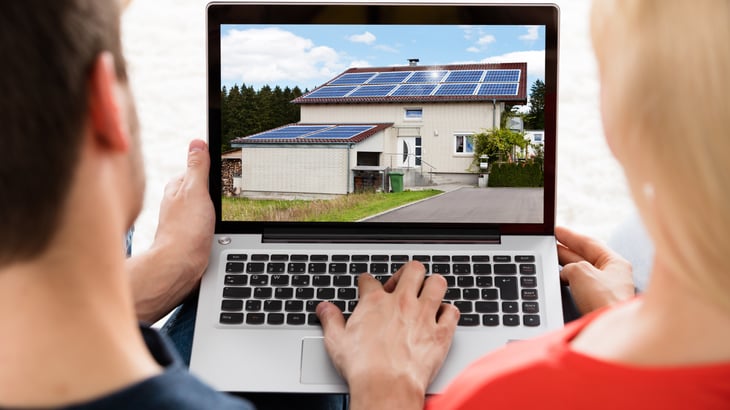
Net metering is when homeowners sell their excess energy to the grid in exchange for credit. These credits decrease the price of your electric bills.
Not only will net metering put money back in your pocket, but you also will be supplying green energy to your local community.
Performance-based incentives

As the name suggests, these monetary incentives are based purely off of the performance of your panels. For every kilowatt-hour (kWh) produced, homeowners may be eligible to claim a flat-rate payout.
The availability of performance-based incentives differs from area to area. But performance-based incentives might be available in some states or with certain utility companies.
Rebates

State governments and utility companies sometimes offer rebates for homeowners who have installed solar panels, another monetary benefit that can help you pay for the solar panels.
Solar renewable energy credits (SRECs)

Solar renewable energy credits, also known as SRECs, allow you to earn a return on your solar system.
Some states require a certain minimum amount of solar-generated electricity. To meet the required quota, utility companies might buy solar renewable energy certificates.
The prices of SRECs are influenced by demand, so prices vary. Generally, solar renewable energy credits are bought for anywhere from $50 to $300.
Tax credit

State governments offer tax incentives that can cover up to about 10% of the cost of solar panels.
10. Pay for Themselves

The upfront price tag for solar panels is expensive and may be a turnoff for some people. Although the initial cost is intimidating, solar panels eventually pay off their own cost via savings on power bills and financial incentives.
Generally, solar panels pay for themselves in about five to 10 years.
Depending on the costs of your local electric bills and the productivity rates of your solar panels, it can sometimes take longer than a decade for the solar power system to pay for itself.
FAQs About Solar Panels

What Are the Disadvantages of Solar Panels?
Although solar panels offer many benefits, there are some drawbacks as well, including:
- Initial cost. Although solar panels prices have dropped in cost by 80% in the past decade, it is still expensive to install them. Systems cost $15,000 to $26,000.
- Not aesthetically appealing. Solar panels look clunky and interfere with the beauty of the roof.
- Inactive hours. At nighttime, solar panels are unproductive and don’t generate energy. They are also less productive in shaded or cloudy areas.
- They don’t work on every roof. Some roofs can’t handle the weight of solar panels. Other roofs don’t get enough sunshine. To accommodate solar panels, roofs must have the appropriate angle, shape, space, and amount of sun.
Are Solar Panels Recyclable?
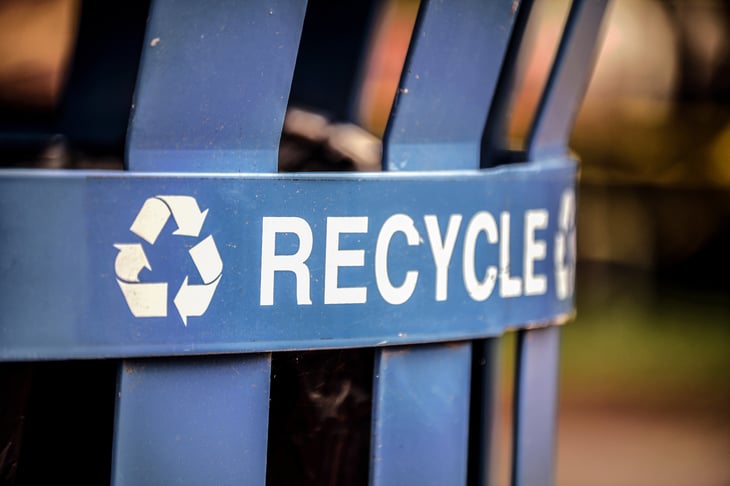
While a solar panel may not be 100% recyclable, there are plenty of materials in a solar panel that can be recycled, including glass, aluminum, copper wire, plastic, silicon, and metal.
It is expensive and difficult to recycle solar panels. As a result, only about 10% of solar panels are recycled in the United States.
Unfortunately, many solar panels end up in landfills, despite the fact that they contain toxic waste that could cause environmental pollution by infecting the ground and nearby water supply.
Do Solar Panels Damage My Roof?
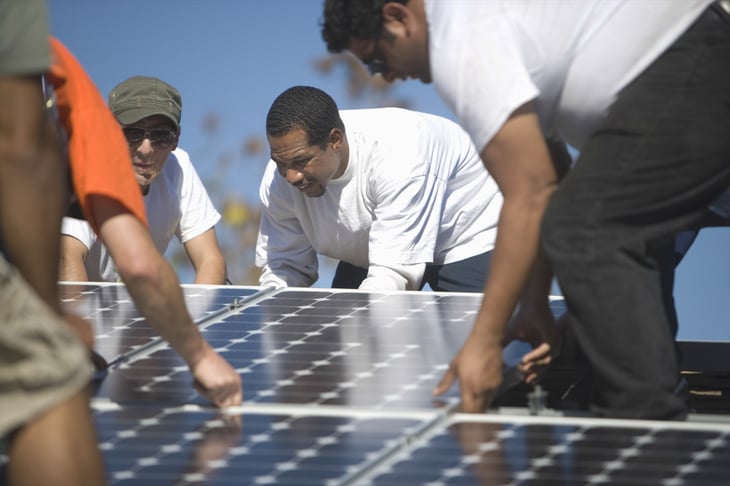
If installed properly, solar panels will not damage your roof. In most cases, solar panels can actually prolong the life of your roof as they shield your roof from rough weather and the heat of the sun.
Only badly installed solar systems lead to roof damage.
Ready for Renewable Energy?
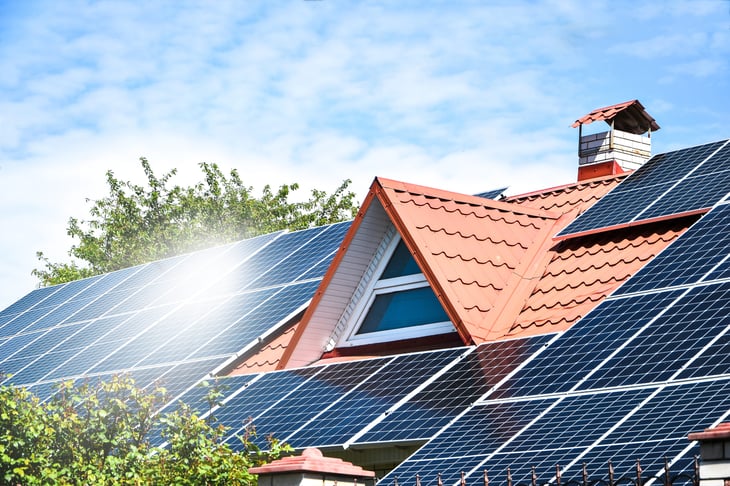
There are a lot of things to consider before going solar, but it’s an environmentally friendly choice that has many advantages: They are eco-friendly, low-maintenance, save money in the long run, increase your home’s value, and keep your roof cool.






Add a Comment
Our Policy: We welcome relevant and respectful comments in order to foster healthy and informative discussions. All other comments may be removed. Comments with links are automatically held for moderation.